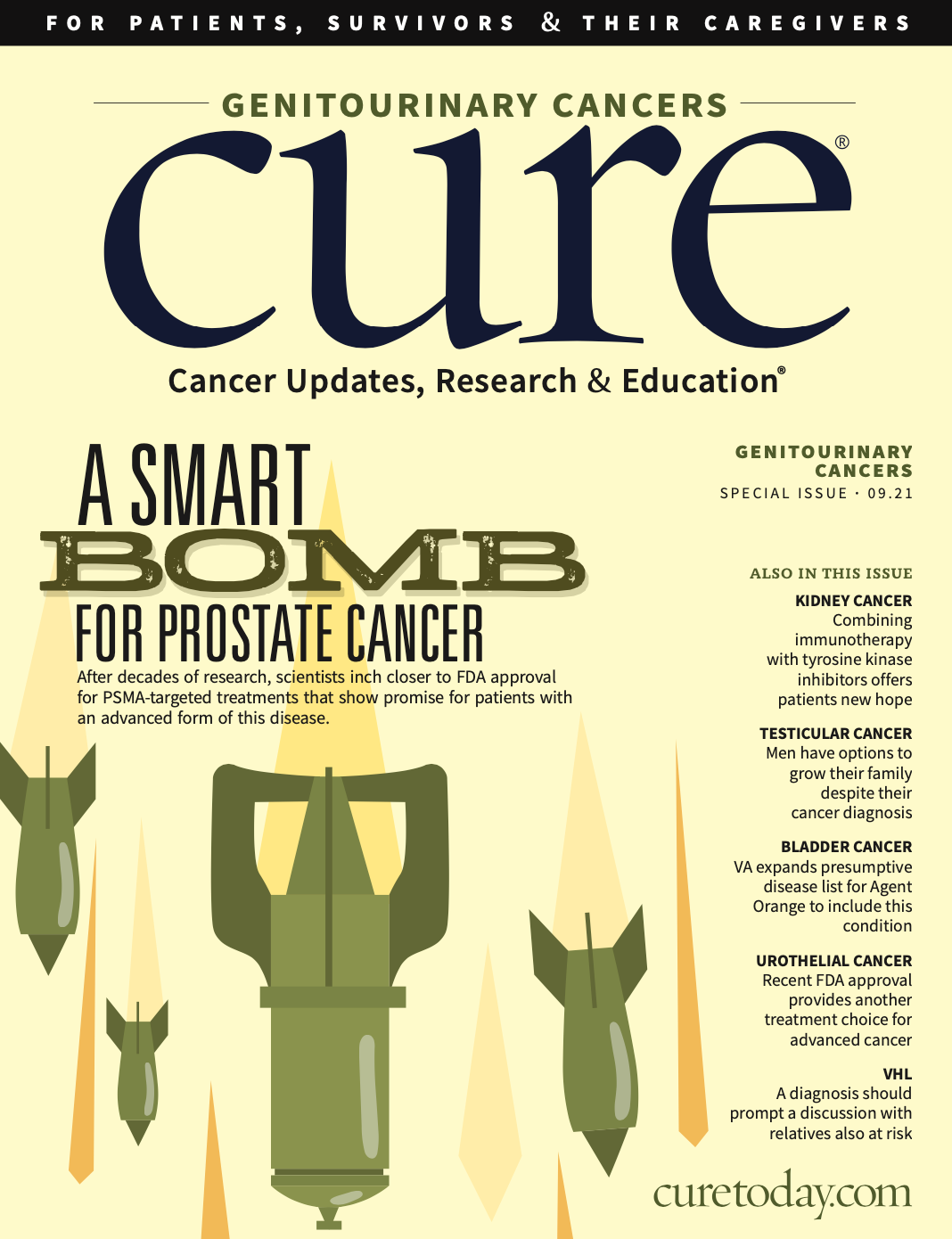Publication
Article
CURE
The Importance of Active Surveillance in Low-Risk Prostate Cancer
Author(s):
Monitoring, rather than immediately treating, patients with low-risk prostate cancer may be a better approach, says an expert from UCSF Helen Diller Family Comprehensive Cancer Center.

Study findings have shown for years that active surveillance may be preferable for patients with low-risk prostate cancer compared with treatment, and recent study results presented during Europe’s largest urological conference highlighted the potential for greater benefit in patients older than 60 with lower-risk prostate cancer.
To better understand the meaning of these findings, CURE® spoke with Dr. Peter R. Carroll, a member of the UCSF Helen Diller Family Comprehensive Cancer Center and professor in the department of urology at the University of California, San Francisco. Carroll conducts a research program in this area and sees the advantages of active surveillance. Still, he worries that this age cutoff may be preventing other patients from benefiting from this approach.
“I see a fair number of patients less than age 60 years who may be candidates for surveillance,” he said. “Active surveillance is about timing of treatment for many. ‘Does this cancer need to be treated right now?’ is the perspective of many. Younger patients have a lower rate of (cancer) upgrading (to an increased risk) compared to older patients who tend to have worse cancers. ... Although (younger patients) have a longer life expectancy and they are more likely to require treatment compared to older patients, many if not most of those with low-grade cancers can avoid the immediate side effects of treatment and still be treated for cure later as needed. It’s kind of counterintuitive to many, but it’s true.”
Specifically, active surveillance includes monitoring patients over time with periodic imaging, PSA measurements and, less commonly, biopsies to identify preclinical progression of the cancer when they are still eligible for curative treatment. Carroll mentioned that in men with low-risk disease on surveillance, approximately 1 in 3 requires treatment in three to five years, which may increase to 50% over a 10-year period. Currently, an active surveillance regimen is tailored around a patient’s individual risk.
“Now we’re understanding much more clearly who’s at risk for (cancer) upgrading and when,” Carroll explained. “The risk (for cancer progression) is characterized by things like PSA density, genomics (and) imaging, so we’re identifying a patient population who needs less-intensive surveil- lance. Someone may require more intensive surveillance, but that’s being refined. I think we’re making it less burdensome.”
Carroll added that 20 years ago, almost everyone diagnosed with prostate cancer received treatment, but in the past decade, oncologists employed a refined treatment strategy so that patients were treated selectively. Recently, urologists have been aiming to limit the number of patients who undergo biopsy, especially for those who are unlikely to have cancer and those with very low- volume, low-grade cancers, which are generally indolent. Newer screening practices combining biomarkers and imaging have decreased biopsy rates by approximately 30% to 40%, Carroll said.
He advises doctors to have a conversation with their patients about low-risk prostate cancer before a biopsy is performed.
“I tell a patient before biopsy, ‘Recognize we may identify a cancer in you that I’m going to tell you not to treat,’” Carroll said. “When you have that conversation before the biopsy, it’s much easier to have the conversation (about active surveillance) afterward.”
Although many study findings have established that active surveillance can help patients with low-risk prostate cancer and the approach has been recommended in major cancer guidelines in the U.S. and Europe, active surveillance is “not put into practice as consistently as we’d like,” Carroll noted.
Carroll also mentioned that other factors could play a role in the low usage of active surveillance in these patients. For example, oncologists, urologists and radiation oncologists are trained to deliver treatment, and there are strong economic drivers of delivering care. In addition, patients often hear the word “cancer” and think it’s a lethal disease “even though we know that in many instances, it’s not,” Carroll said.
While undergoing active surveillance, patients may benefit from participating in lifestyle management, which combines diet and exercise to hopefully reduce the risk of disease progression. (Of note, a specific diet and/or exercise regimen best suited to reduce this risk is a matter of much debate.) Carroll mentioned another important advantage of lifestyle management during active surveillance.
“When patients are doing something (like diet and exercise), they tend to be more compliant with surveillance,” he noted. “I think people like to be doing something. It’s been our impression that those people who do lifestyle management tend to be more compliant and less anxious about the disease state.” Also, he noted, that lifestyle management lowers the risk of many common diseases such as cardiovascular disease and diabetes. After patients receive a diagnosis, it’s important for them to take their time processing the information, researching and becoming better educated to make the best decision for them.
“If you get a diagnosis of prostate cancer, don’t rush. Get educated,” Carroll advised. “That’s the No. 1 thing I would tell people. ... Understand your disease. When you decide on a path (of) treatment (including active surveillance), you want it to be a well-informed decision. That takes a little time and effort.”
For more news on cancer updates, research and education, don’t forget to subscribe to CURE®’s newsletters here.





